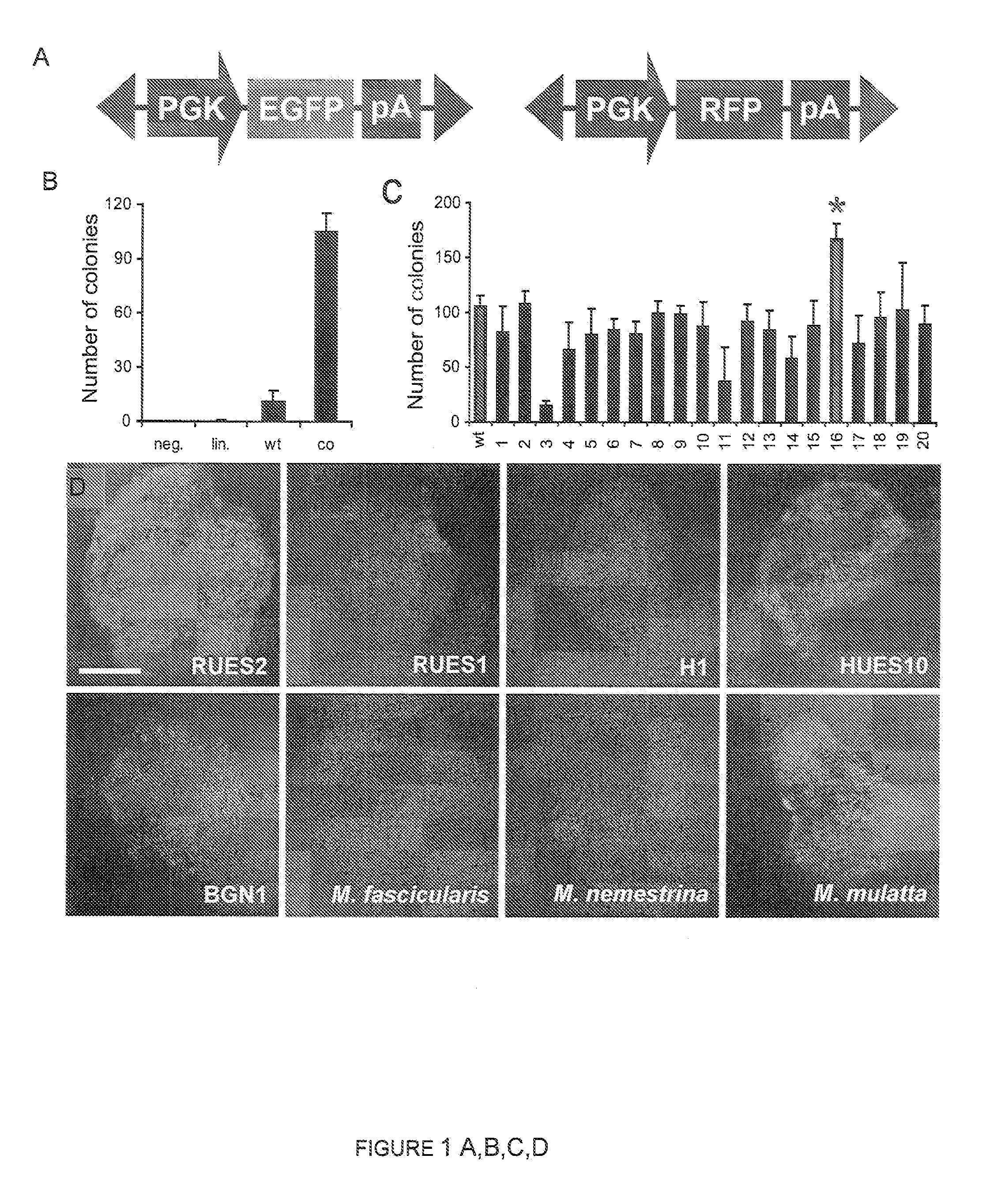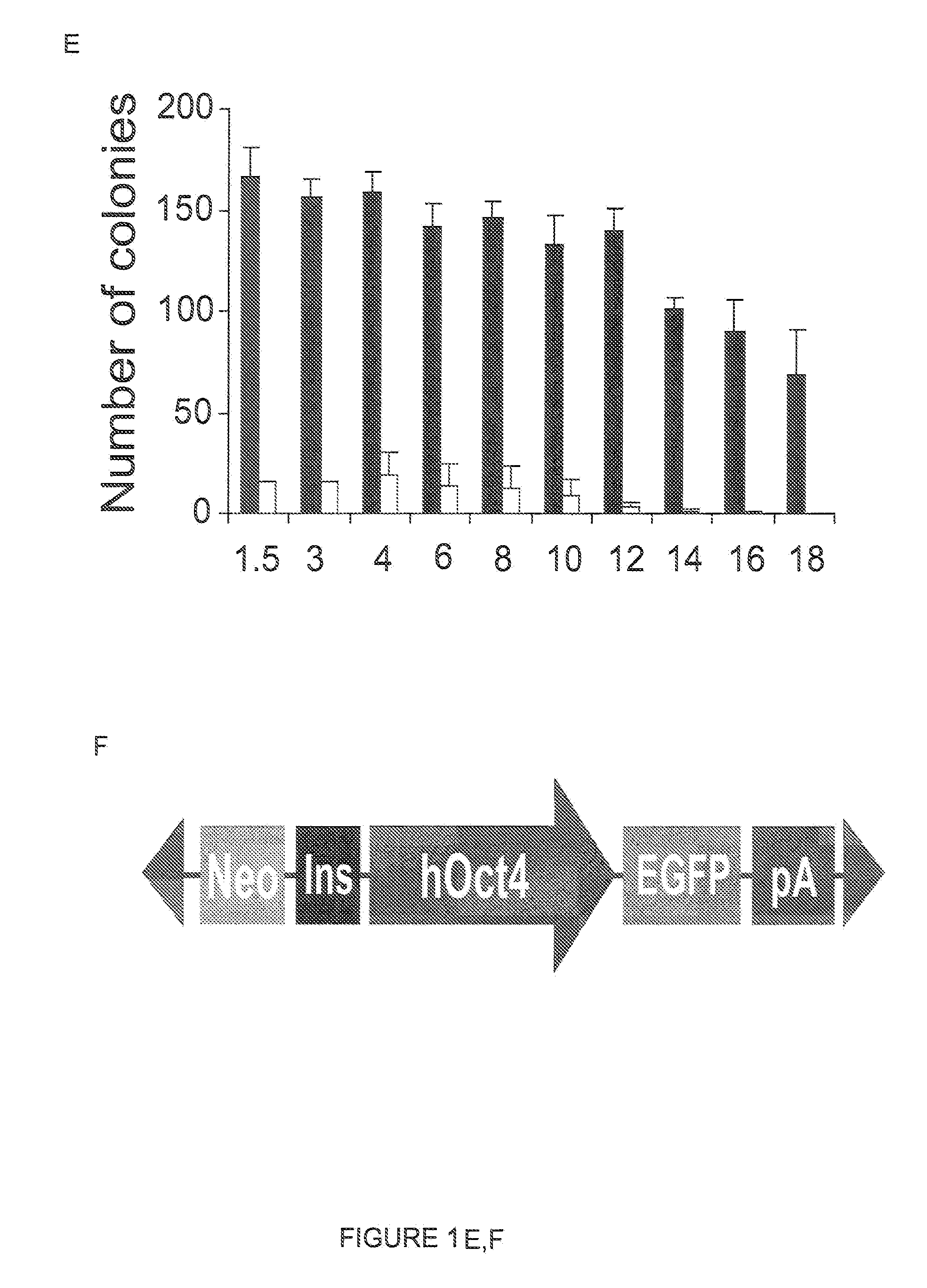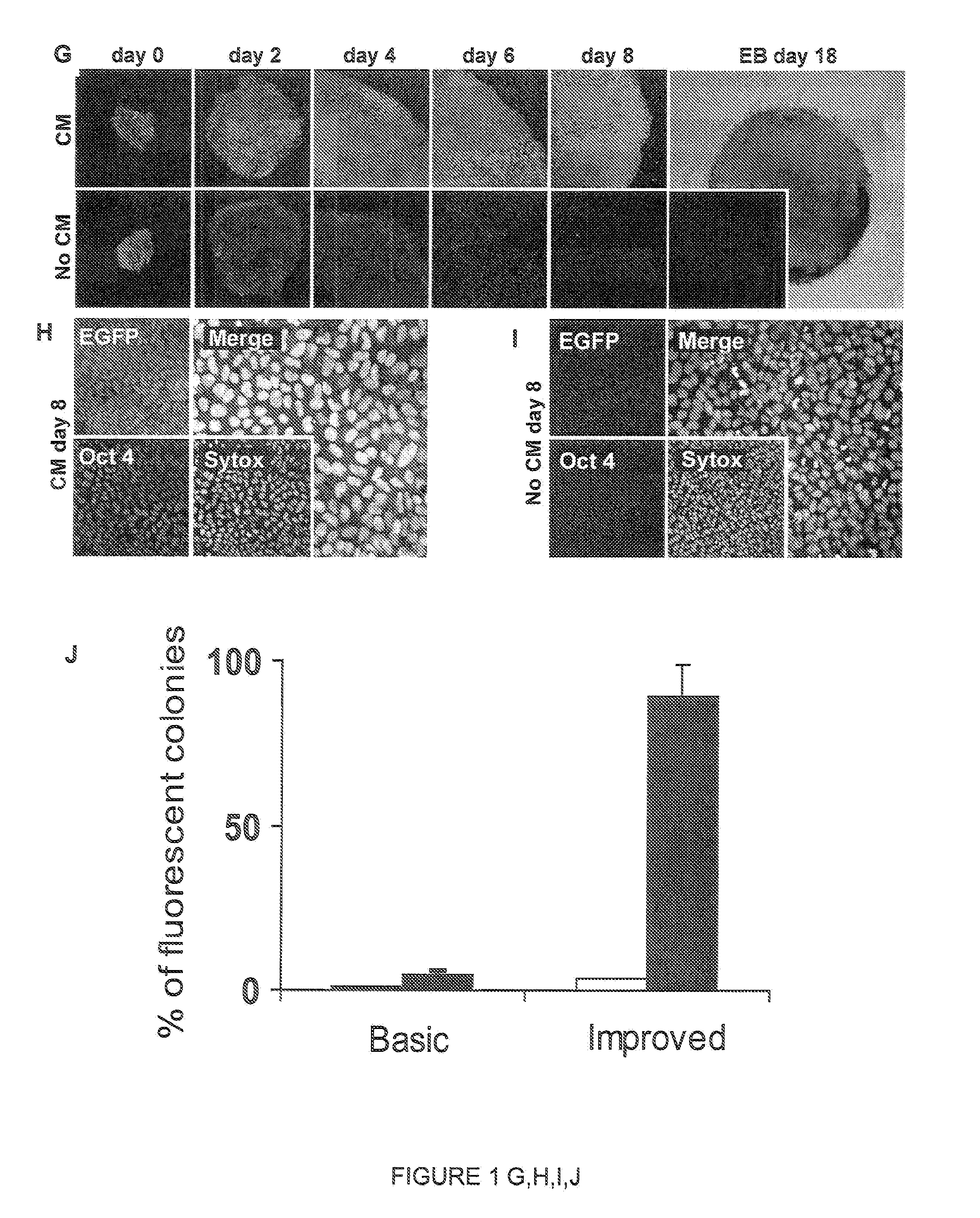Compositions and Methods for Transposon Mutagenesis of Human Embryonic Stem Cells
- Summary
- Abstract
- Description
- Claims
- Application Information
AI Technical Summary
Benefits of technology
Problems solved by technology
Method used
Image
Examples
example 1
Methods
[0143]DNA constructs. The original PiggyBac transposase DNA was obtained from Dr M. Fraser (University of Notre Dame, Ind., USA). The ePiggyBac transposase cDNA was custom synthesized. To generate helper plasmids, transposase cDNAs were cloned in pBluescript (Stratagene, La Jolla, Calif., USA) downstream of a human phosphoglycerate kinase (PGK) or CAG promoter and upstream of an SV40 polyadenylation signal sequence. Minimal 313 by 5′TR and 235 by 3′TR were custom synthesized and cloned respectively upstream and downstream of expression cassettes containing the PGK promoter driving EGFP (BD Biosciences, San Jose, Calif., USA) or tagRFP (Evrogen, Moscow, Russia). The plasmid rescue system also included an ampicillin resistance cassette and an origin of replication from pBluescript cloned between the 5′- and 3′-terminal repeats. To improve gene transfer efficiency, mutations in terminal repeats were introduced using the GeneMorph II random PCR mutagenesis system (Stratagene, La ...
example 3
ePiggyBac can be Used to Deliver Large Inserts into the hESC Genome
[0153]One of the most important advantages of the use of the PiggyBac system over other gene delivery systems lies in the PiggyBac transposon's ability to carry large DNA inserts (Ding, S., et al. (2005) Cell 122: 473-483). To investigate ePiggyBac's ability to integrate large DNA constructs in the hESC genome, inserts of increasing size were added to the transposon (FIG. 1E). It was found that although transposition efficiency decreased significantly for inserts larger than 14 Kb, ePiggyBac could deliver inserts of up to 18 Kb in size to the hESC genome, which is larger than the insert size delivered by the original PiggyBac system (FIG. 1E), or the maximum 14.3 Kb insert size previously reported for mouse embryos (Ding, S., et al. (2005) Cell 122: 473-483).
example 4
ePiggyBac can Deliver Large Inserts Containing Multiple Components Such as Expression Cassettes, Insulator Sequences and Plasmid Rescue Systems
[0154]A 12 Kb transposable insert was created containing an origin of replication for plasmid rescue, a constitutively expressed neomycin-phosphotransferase cassette, and a reporter construct where EGFP expression is driven by the human Oct4 promoter (Gerrard, L., et al. (2005) Stem Cells 23: 124-133) (FIG. 1F). The insert included a chicken HS4 insulator (Recillas-Targa, F., et al. (2002) Proc. Natl. Acad. Sci. USA 99: 6883-6888) to prevent the constitutively expressed neomycin cassette from interfering with the hOct4-EGFP reporter, which should only label undifferentiated hESCs (Gerrard, L., et al. (2005) Stem Cells 23: 124-133). After gene delivery, 7 days of neomycin selection were sufficient to select EGFP-positive colonies that could be expanded to establish an hOct4-EGFP RUES2 cell line. To test the specificity of EGFP labeling, we com...
PUM
| Property | Measurement | Unit |
|---|---|---|
| Fraction | aaaaa | aaaaa |
| Digital information | aaaaa | aaaaa |
| Length | aaaaa | aaaaa |
Abstract
Description
Claims
Application Information
 Login to View More
Login to View More - R&D
- Intellectual Property
- Life Sciences
- Materials
- Tech Scout
- Unparalleled Data Quality
- Higher Quality Content
- 60% Fewer Hallucinations
Browse by: Latest US Patents, China's latest patents, Technical Efficacy Thesaurus, Application Domain, Technology Topic, Popular Technical Reports.
© 2025 PatSnap. All rights reserved.Legal|Privacy policy|Modern Slavery Act Transparency Statement|Sitemap|About US| Contact US: help@patsnap.com



